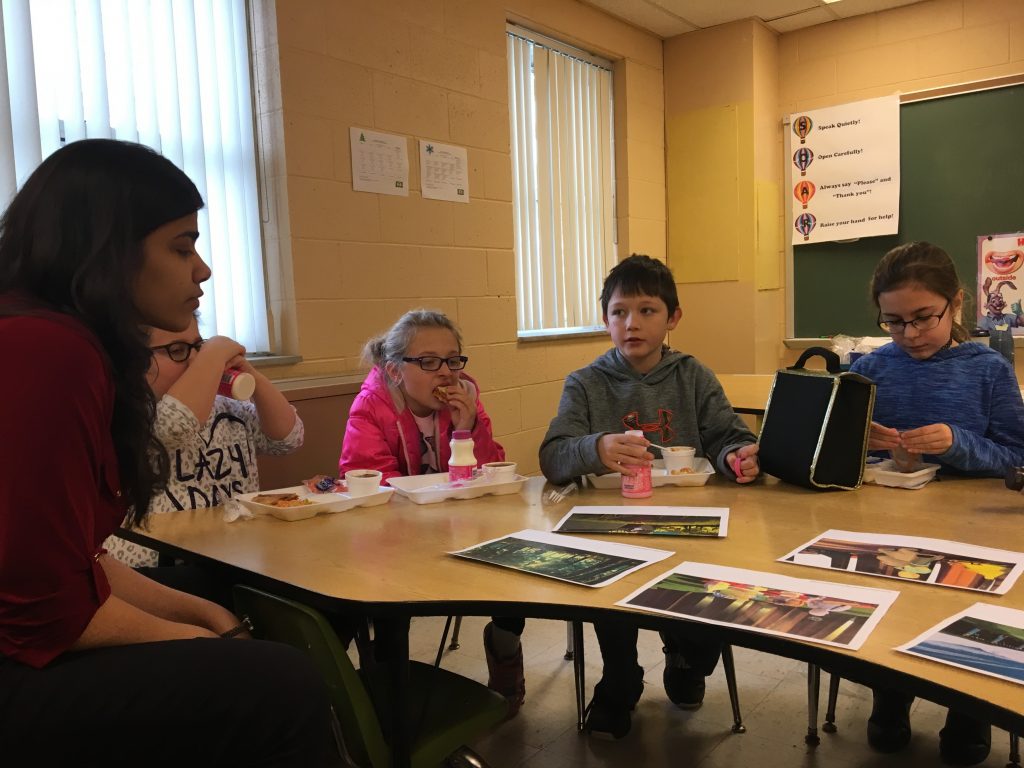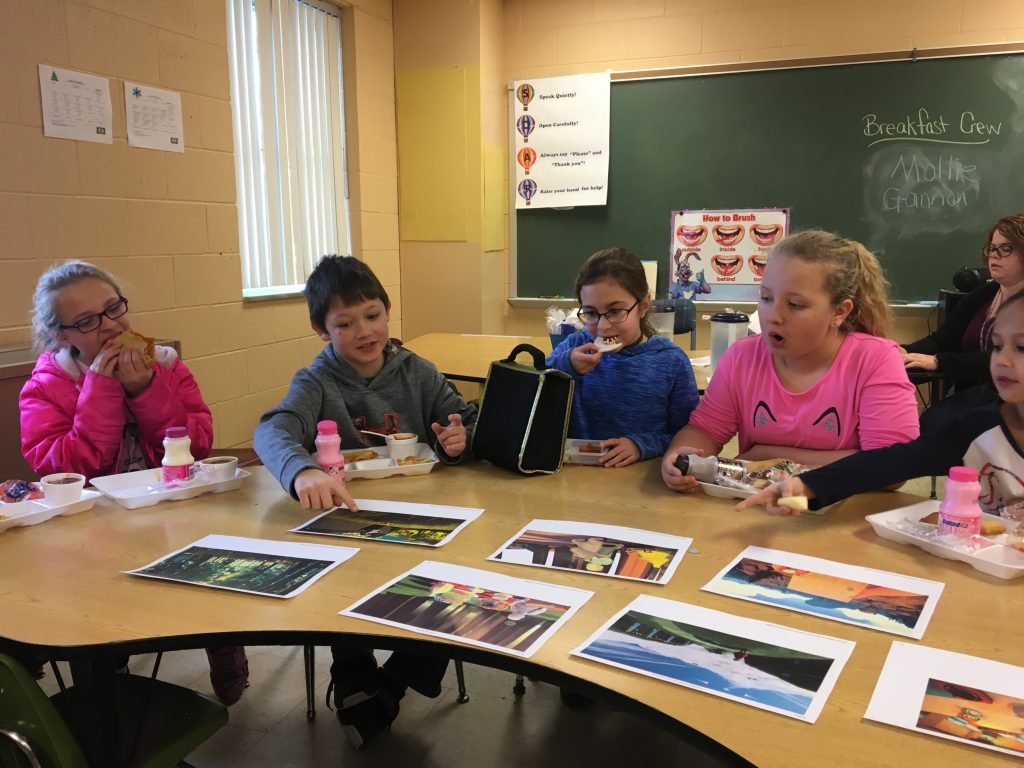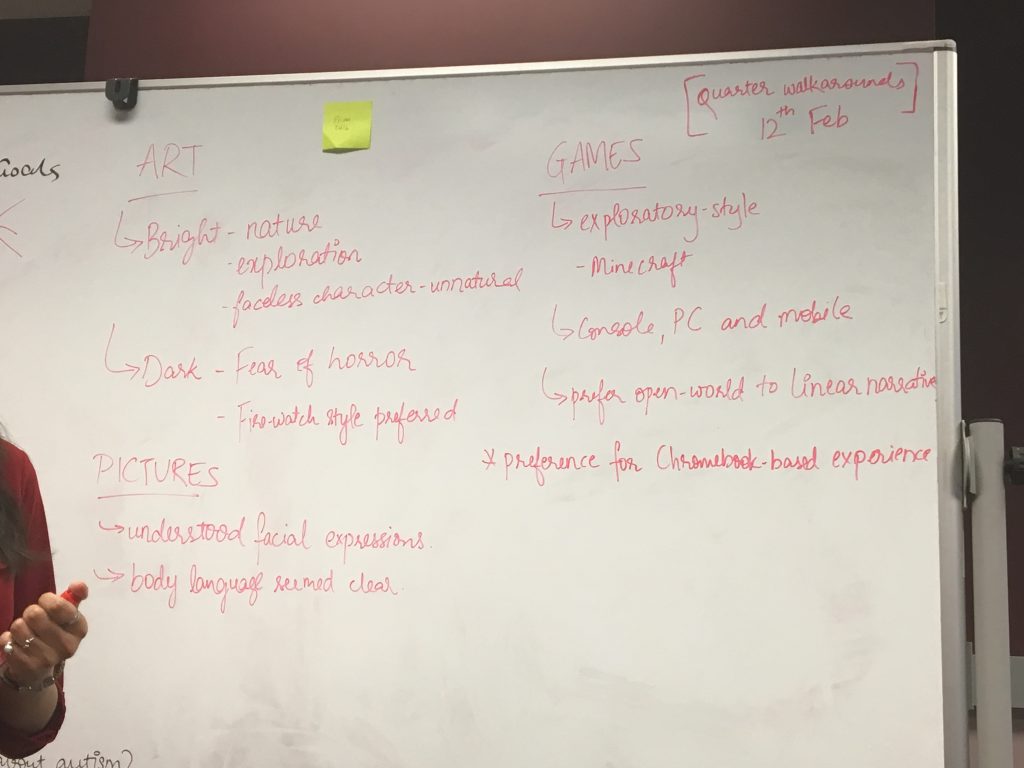
This week was a particularly momentous week for the folks here at Prism. We consulted with two outside experts, playtested our early design ideas with children, and made a tentative decision on platform and first prototyping.
On Monday, we met with Michelle Lubetsky, M.Ed., BCBA, who is the Training Consultation and Coordinator in the Department of Teaching and Learning at the Allegheny Intermediate Unit here in Pittsburgh. The AIU, as part of the Pennsylvania public education system, provides a plethora of specialized educational services to the schools in Allegheny County. Michelle’s focus is on working with children with autism and awareness education for neurotypical children; precisely the kind of subject matter expert we needed to speak with!
Our conversations with Michelle helped reinforce much of the research we did as a team; we discussed traits and behaviors found in people across the broad range of the autism spectrum. Because there is such a wide variety of ways that autism manifests in people (as a spectrum disorder, its severity ranges significantly), it can be rather challenging to be fully representative in an experience that is attempting to simulate what autism feels like. What one autistic person reports seeing/hearing/feeling as they interact with the world often varies greatly from what another person reports.
We kept this in mind as we met with Sabrina Culyba, principal designer at Schell Games, and an expert at creating transformational games. In fact, Sabrina has created the Transformational Framework, an industry-standard way of beginning the development process on a game/experience that seeks to impart meaningful change to its players. Sabrina reminded us that while we may have tons of noble aspirations in what we want to achieve with our project, it can be helpful to narrow them down to just a small handful, if we actually hope to accomplish anything over this semester. We’ve learned from past projects at the ETC that many teams try to fly a little too close to the sun with some of their ambitions and are disappointed when they fall short. We are keeping this in mind as we begin the design process in earnest.
After all of our consulting, it was time to take some of our ideas to our target demographic: actual 3rd and 4th graders who could eventually be playing our game. We had a lunch session with students at Beech Bottom Primary, where the children sat with us as we presented our concepts. We shared inspirational images of possible graphical styles we were considering and learned about their aesthetic preferences. We showed them pictures of children interacting in common school settings, to understand how they develop narratives in their own minds. And we also simply chatted about favorite video games and the types of experiences they are drawn to.

The results were illuminating. We saw the distinct, undeniable influence of Minecraft in their preferences: a penchant for bright, nature-inspired imagery, open worlds that offer the ability to explore at the player’s own pace and a distaste for traditional, linear narratives. Also, they explicitly told us they loved Minecraft and they would have talked endlessly about it if they didn’t have to go back to class.

At the end of the week, our team buckled down and tried to synthesize everything we’ve thought about over the last three weeks. Taking into account our goals, the budgetary limitations of our client, the inherent flaws in direct autism simulation, an achievable scope, longevity beyond this semester, and the preferences of our target demographic, we arrived at the first idea we intend to prototype next week—an allegorical game involving diurnal and nocturnal animals collaborating to build a habitat in a forest-like setting, playable on PC web browsers. Next week, we’ll dive into prototyping and report back with what we’ve built and what we’ve learned.
